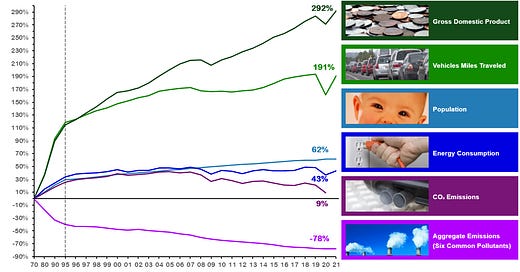A few weeks after the fact, the February 3rd accidental spillage of toxic chemicals by train derailment in East Palestine, Ohio has gotten a great deal of attention. Some of the attention has been politically driven, but I think there are other factors at play worth examining.
While the authorities have determined that the local air and water are safe, the residents were and are justifiably fearful. I think we can all relate viscerally to their fear.
I take for granted that the air I breathe and the water I drink are clean. The idea that I would be told suddenly to leave my home because my air and water might be toxic would be a shocking nightmare, one that would immediately become my number one issue such that I would be furious at any politician whose response was untimely or lacked concern.
So I think it was both telling and a mistake for President Biden to have chosen not to visit the site of the spill. A mistake especially in light of the great hullabaloo surrounding the president’s visit to Kyiv. Perhaps the Biden Administration didn’t want to detract attention from the theatrics of his surprise Ukraine visit. That was short-sighted. A visit to Ohio would have been an important sign and symbol that Biden cared about rural towns like East Palestine and, even more importantly, that he cared not only about global warming/green energy, but about the American environment today.
Our discourse about the environment has taken a strange turn. The triumphal, actual, fact-based improvement in air quality over the past fifty years is scarcely known, while the possibility of decades-hence future climate doom is highlighted, often in credibility-sucking, repeated hyperbole about “last chances” to “save the planet.”
And rather than garnering support for climate policies that build on proven successful policies of making American air cleaner today, climate policy is marketed based on global warming, something that America actually has steadily diminishing agency over.
A few illustrative charts. First, here is the EPA’s record of cleaning American air.
Despite this progress, about one third of Americans continue to live in areas with air quality that remains unhealthy by today’s more stringent standards. And that defect is concentrated in areas where lower income populations tend to live. Inner cities, towns near industrial sites (Flint, Michigan), or places like East Palestine on the wrong side or too close to the tracks. So there is much climate justice work to be done.
The transition to an increase in the use of cleaner energy is a key policy lever to clean the air. But it’s not the only policy lever. In the decades ahead, while we continue to use fossil fuels, there are regulations that can continue to reduce the release of unhealthy particles into our air, such as more rigorous requirements to use better scrubber (filter) systems that not only trap the particles but safely dispose of them.
The point is that America has a great deal of agency over the quality of the air we breathe. However, American agency is far weaker when addressing the issue of global warming. Below is a telling chart. It measures the aggregate world emissions of CO2 by country and region. The top of the chart is the annual aggregate emissions, and the thickness of each region or country’s color is its annual contribution to that total.
The bottom three colors, representing the West (America and Europe) were responsible for almost all the growth of emissions until 1950. Recently, however, the West has moderated emissions, but that progress has been overwhelmed by the increases of other countries who have been catching up to us in terms of industrialization and standards of living by burning increasing amounts of fossil fuels. While we would like to see the rest of the world’s economic growth powered by clean energy, the rest of the world will decide their climate policies based on self-interest, as nations always do.
My takeaways are as follows:
1) Don’t be afraid to celebrate good news about the improving condition of the American environment. We need to remember that sometimes government is an indispensable force for good.
2) Don’t stop pushing for better environmental conditions in America. But make it clear that our goal is to improve the quality of life for all Americans both young and old, alive today and in the future. Environmental Justice should mean that all American communities can enjoy clean air and water. And when something like East Palestine happens and receives a great deal of publicity, it is political malpractice for the president not to demonstrate how much he cares.
3) Don’t fool ourselves into overestimating America’s agency over global warming. We can and should do our share. And we should use our “soft power” of persuasion where we can and lead by example. But China, India, and the other fast industrializing countries in Asia and eventually Africa have more agency than we do.
4) Skeptics are born by hearing and recognizing the false certainty of zealots. We should acknowledge the risks inherent in the warming of the planet, we can and should mitigate that risk, but we can also at the same time be humble enough to acknowledge the immense uncertainty of predictions far into the future about complex systems like the earth’s climate. Back in the 1970s, Paul Ehrlich was certain of an imminent devastating global famine. A series of breakthroughs in agricultural technology made his predictions of famine devastatingly wrong.
5) All the same policies that seek to reduce global warming can also improve air and water quality today. Embrace the dualism.






Well researched and persuasive! I still have hope in America’s lead by example that you mentioned. If our transition to “clean energy” is successful economically, maybe others will follow.
Can tech save the day w/o creating a nightmarish amoral AI singularity God? I say "Yes". that said, i often end my SIRI commands with "please". Just in case.